Paris City Tour
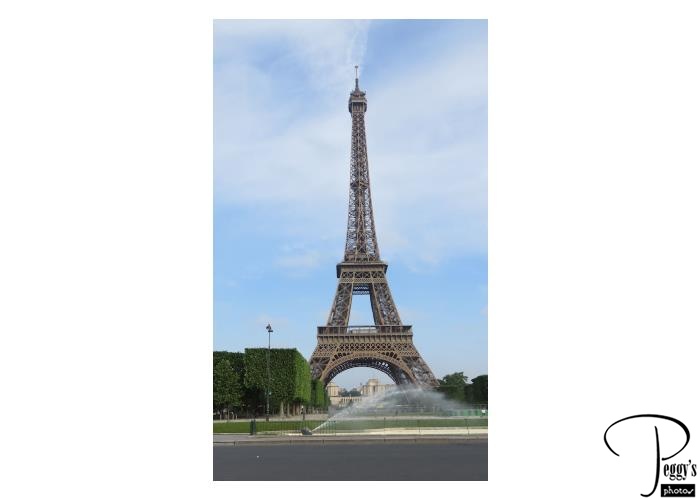
We had a Gate 1 city tour of Paris this morning. Our first photo stop was at the Eiffel Tower. We had a very good local guide who gave us information about what we were seeing, such as that the tower was built between 1887 and 1889 as the entrance to the 1889 Paris World Fair and that after the fair many people wanted it taken down. Luckily, it has survived and it is the tallest building in Paris and now the symbol of France. (FedEx delivered my iPad this morning. They picked it up from Lufthansa lost and found in Frankfurt last night at 6 p.m. and delivered it to my hotel in Paris before 8 a.m. Success!)

Paris City Tour
Dome des Invalides
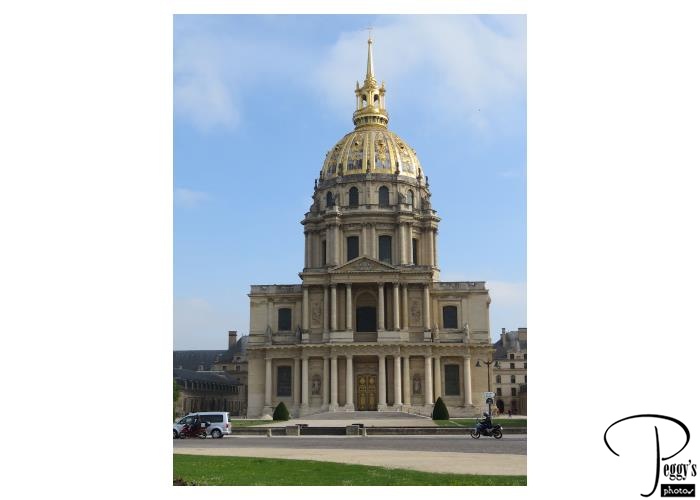
Our second photo stop was at the Dome des Invalides, part of the Les Invalides complex. The Dome des Invalides was commissioned by King Louis XIV as a royal chapel. Napoleon is buried in it.

Dome des Invalides
Our Tour Director
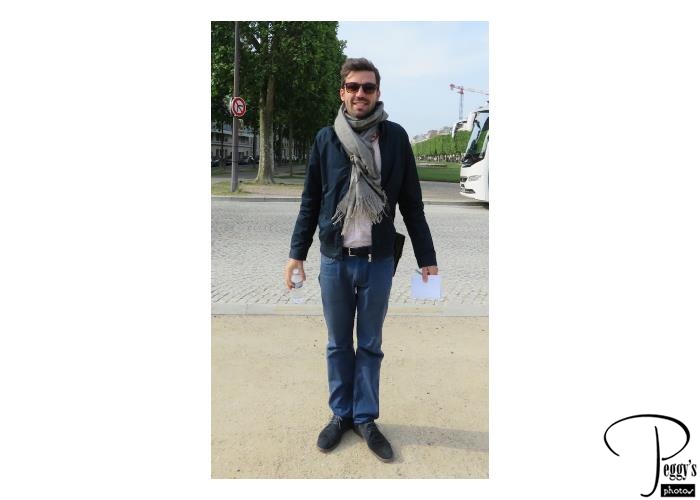
I took this photo at the Dome des Invalides of our great tour director, Simeon. I told him several times of my three previous trips to France––he hadn’t even been born yet for my first two trips. He is from Marseille, France. France has definitely changed since my first trip. At that time, there were still bullet holes on many of buildings in the countryside, “Yankee Go Home” was scribbled on many of them, and newspaper was used for toilet paper.

Our Tour Director
Arc de Triomphe
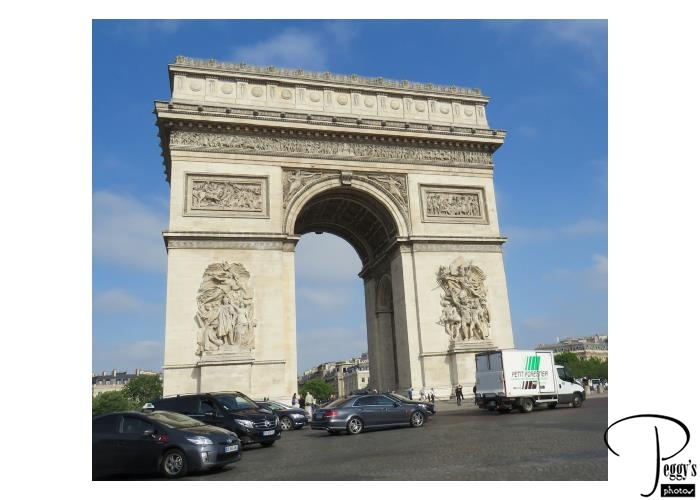
Our last photo stop was at the Arc de Triomphe, which was completed in 1836. The arch honors those who fought and died for France in the French Revolutionary and Napoleonic Wars and was ordered built by Napoleon.

Arc de Triomphe
Champs-Elysses
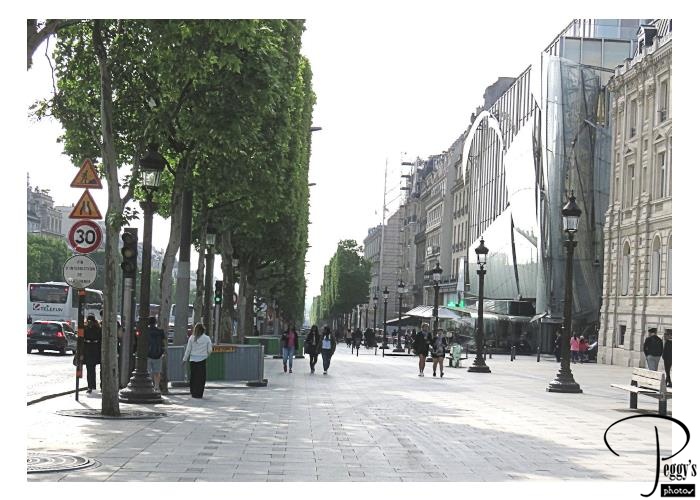
The rest of the tour was of driving around Paris to view it. We drove along the Champs–Elysses from the Arc de Triomphe. On our tour, we drove on both the Right and Left Banks of the Seine. Right Bank: Champs–Elysees, Louvre, Arc de Triomphe. Left Bank: Eiffel Tower, Musee d’Orsay, Les Invalides, Latin Quarter.
I have put my photos of our Paris tour on a slideshow. Go to
http://www.peggysphotos.com/paris–city–tour/
(Slideshows, Western Europe, France, “Paris: City Tour”).

Champs-Elysses
Musee d’Orsay
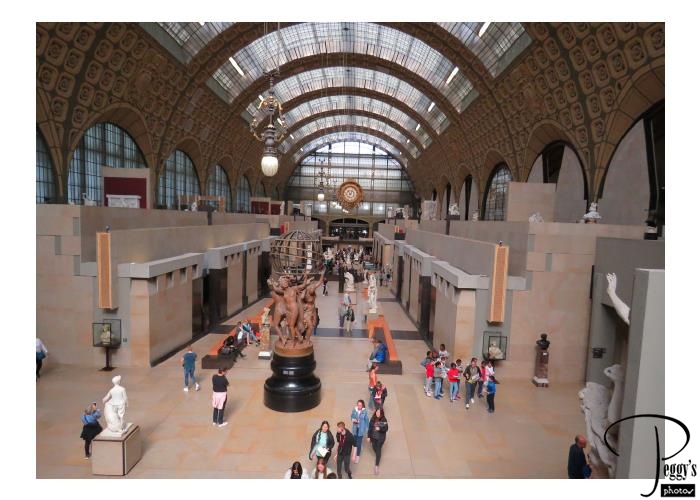
At the end of the city tour, there was an optional tour to Versailles which I did not take as I had already been there. For those of us not going, we had a choice of being dropped off back at our hotel or in front of the Musee d’Orsay. I did the latter. I had already been at the museum on my last trip to France, but the line in front of it was not long, so I decided to visit it again. Photo: inside the Musee d’Orsay.
(The photos I took previously at Versailles in 2004 are at http://www.peggysphotos.com/versailles/
(Slideshows, Western Europe, France, “Versailles”).

Musee d’Orsay
Musee d’Orsay
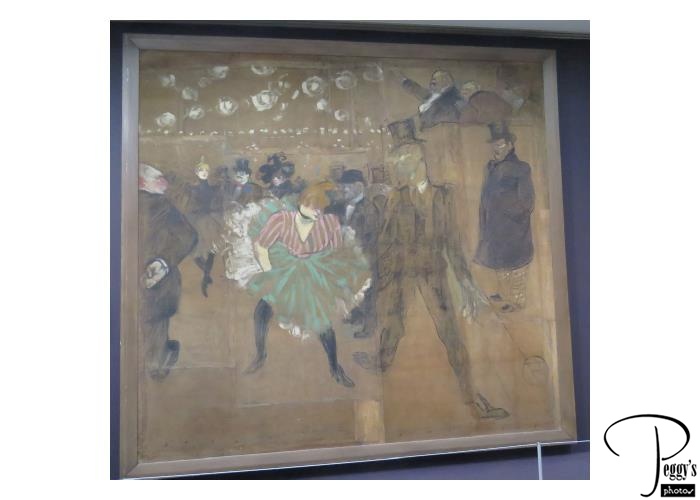
The Musee d’Orsay contains French art dating from 1848 to 1914 and bridges the gap between the Louvre (13th century to 1848 art) and the National Museum of Modern Art. I liked best the Impressionalist art, such as the paintings of Henri de Toulouse–Lautrec, of which the museum had several of. Photo: One of Toulouse–Lautrec’s Moulin Rouge paintings.

Musee d’Orsay
Musee d’Orsay
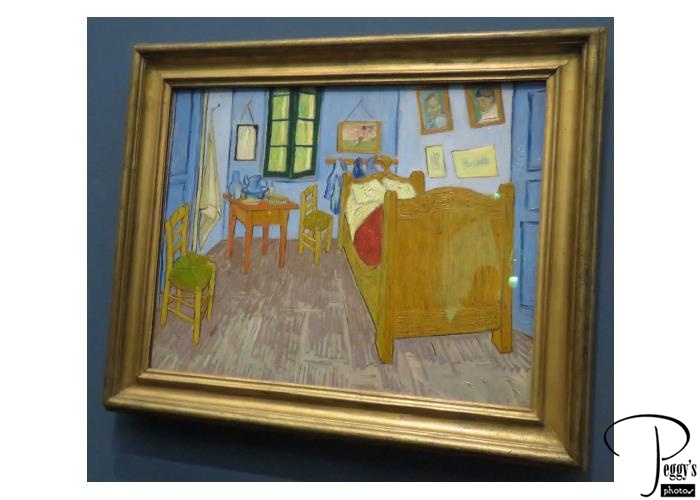
The museum has a number of very famous paintings by Vincent Van Gogh.

Musee d’Orsay
Musee d’Orsay

Another Van Gogh.

Musee d’Orsay
Musee d’Orsay
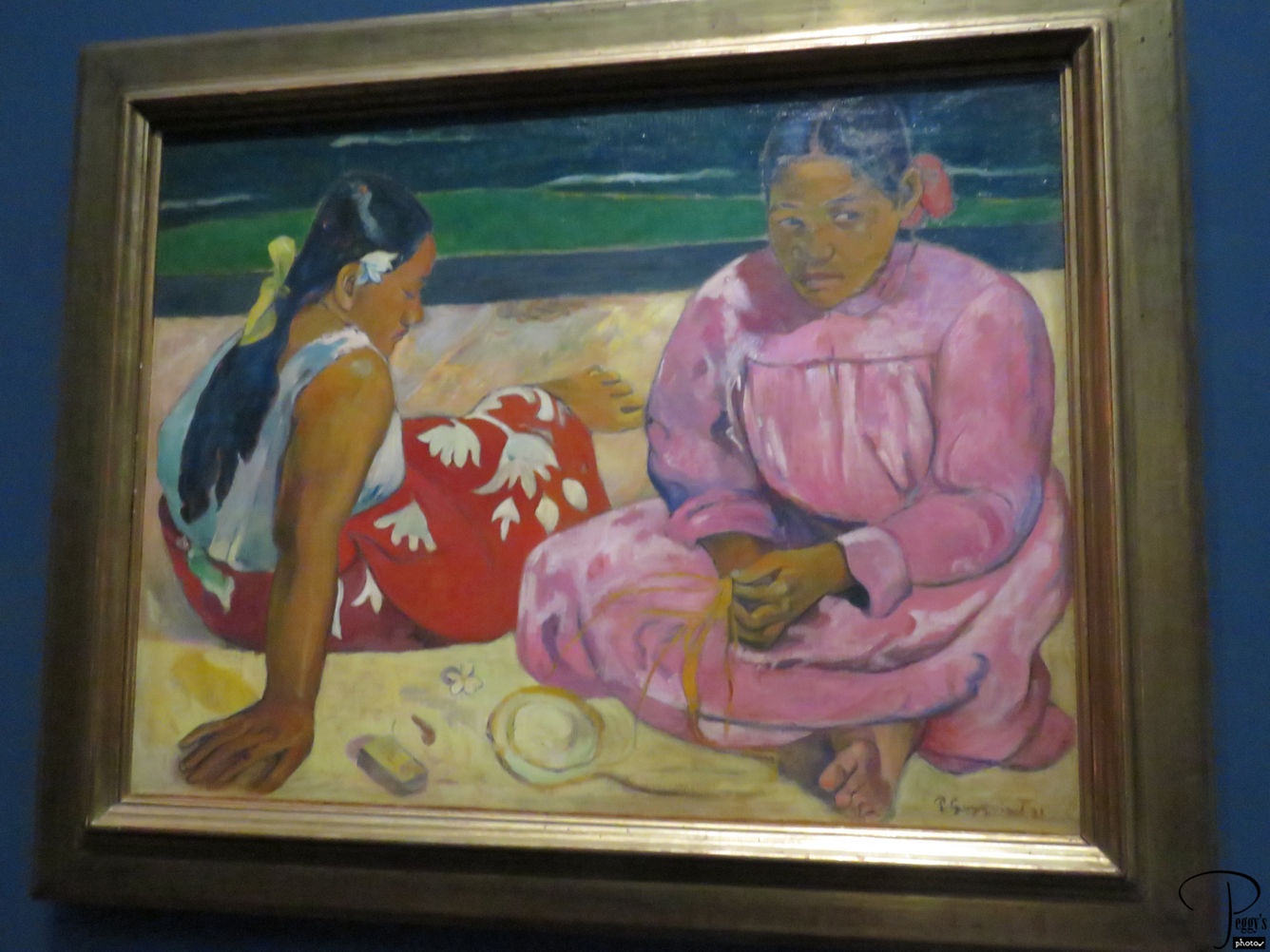
A Paul Gauguin.

Musee d’Orsay
Musee d’Orsay
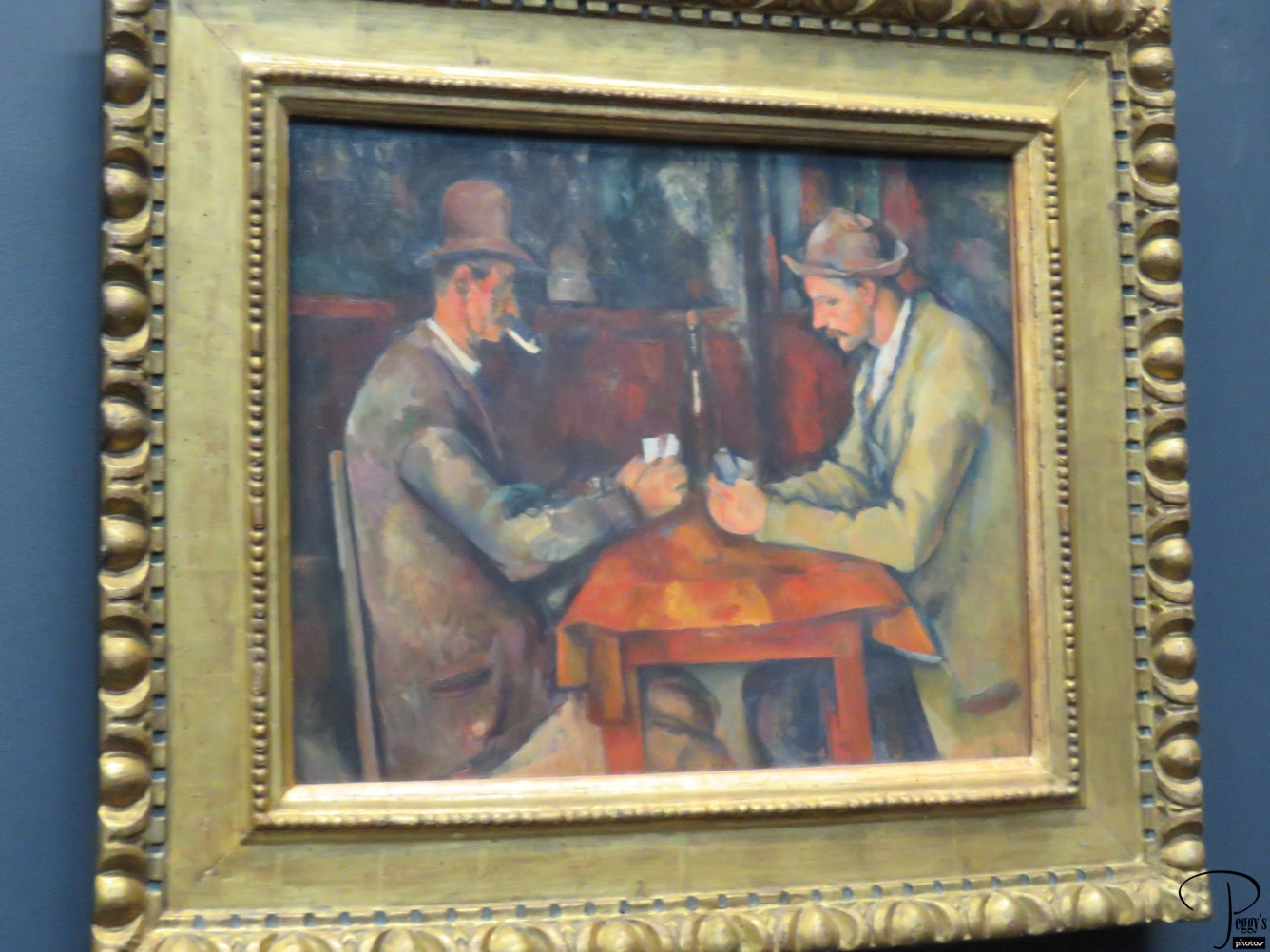
A Paul Cezanne.

Musee d’Orsay
Musee d’Orsay
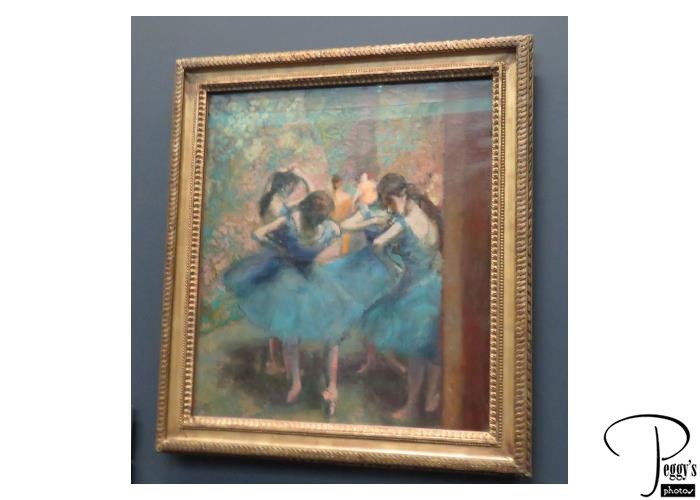
A Edgar Degas. And so many more great paintings at the Musee d’Orsay.
I put my photos of Musee d’Orsay on a slideshow. Go to
http://www.peggysphotos.com/paris–musee–dorsay–2018/
[Slideshows, Western Europe, France, “Paris: Musee d’Orsay (2018”)].
On my website, there is also another slideshow on Musee d’Orsay of photos taken in 2004. Some of the photos are the same as the ones on the 2018 slideshow but many are different. Either what paintings, etc., interested me in 2004 are not the ones that interested me in 2018 or the collection has been moved around as is done often in museums.
For the 2004 slideshow, go to
http://www.peggysphotos.com/paris–musee–dorsay/
(Slideshows, Western Europe, France, “Paris: Musee d’Orsay”).

Musee d’Orsay
Pedestrian Bridge
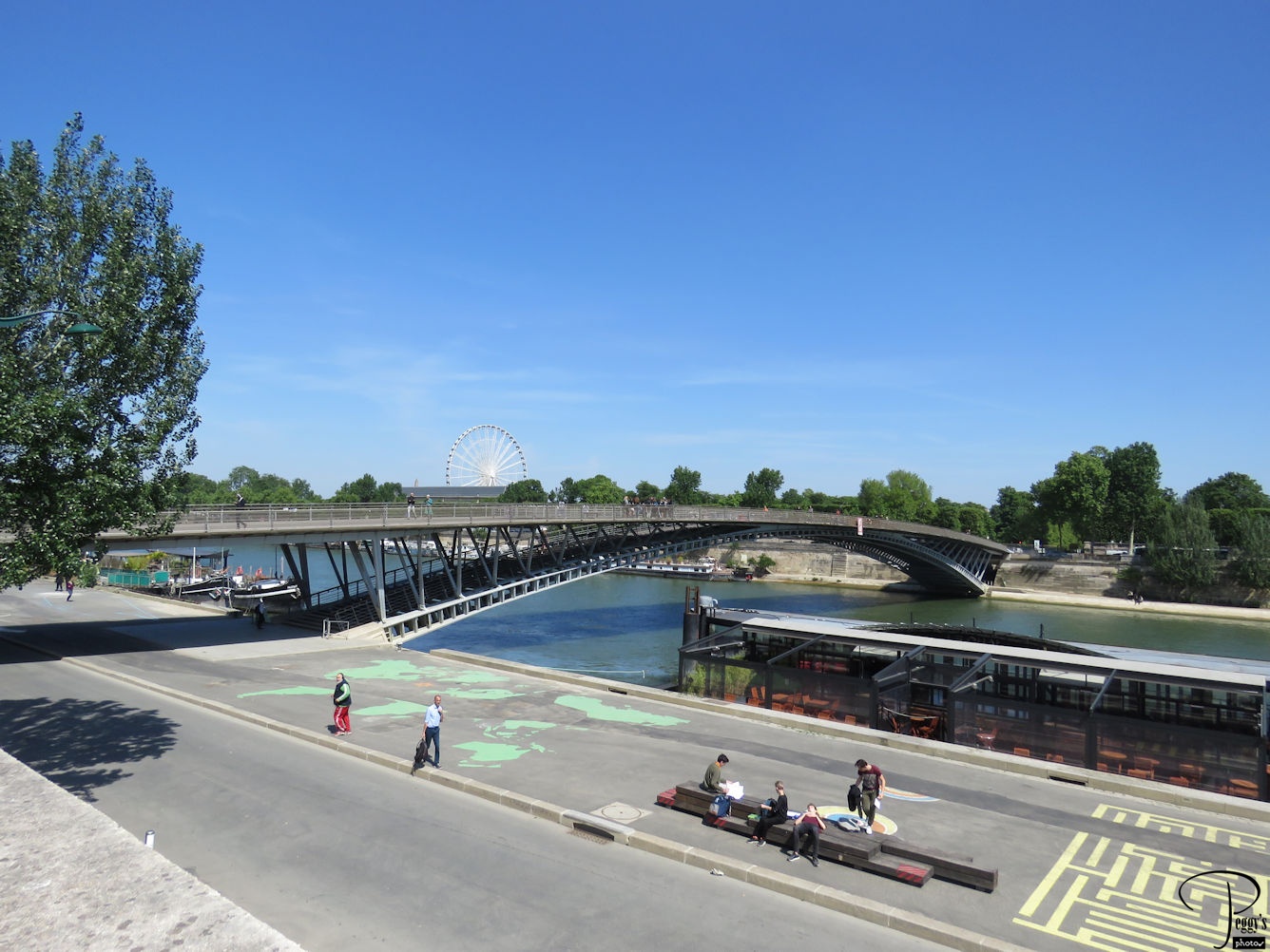
The Passerelle Leopold Sedar Senghor Footbridge (named in memory of Leopold Sedar Senghor who was a writer, politician, and first president of Senegal) is a pedestrian bridge that connects the Musee d’Orsay on the Left Bank of the Seine to the Tuileries on the Right Bank.

Pedestrian Bridge
Pedestrian Bridge
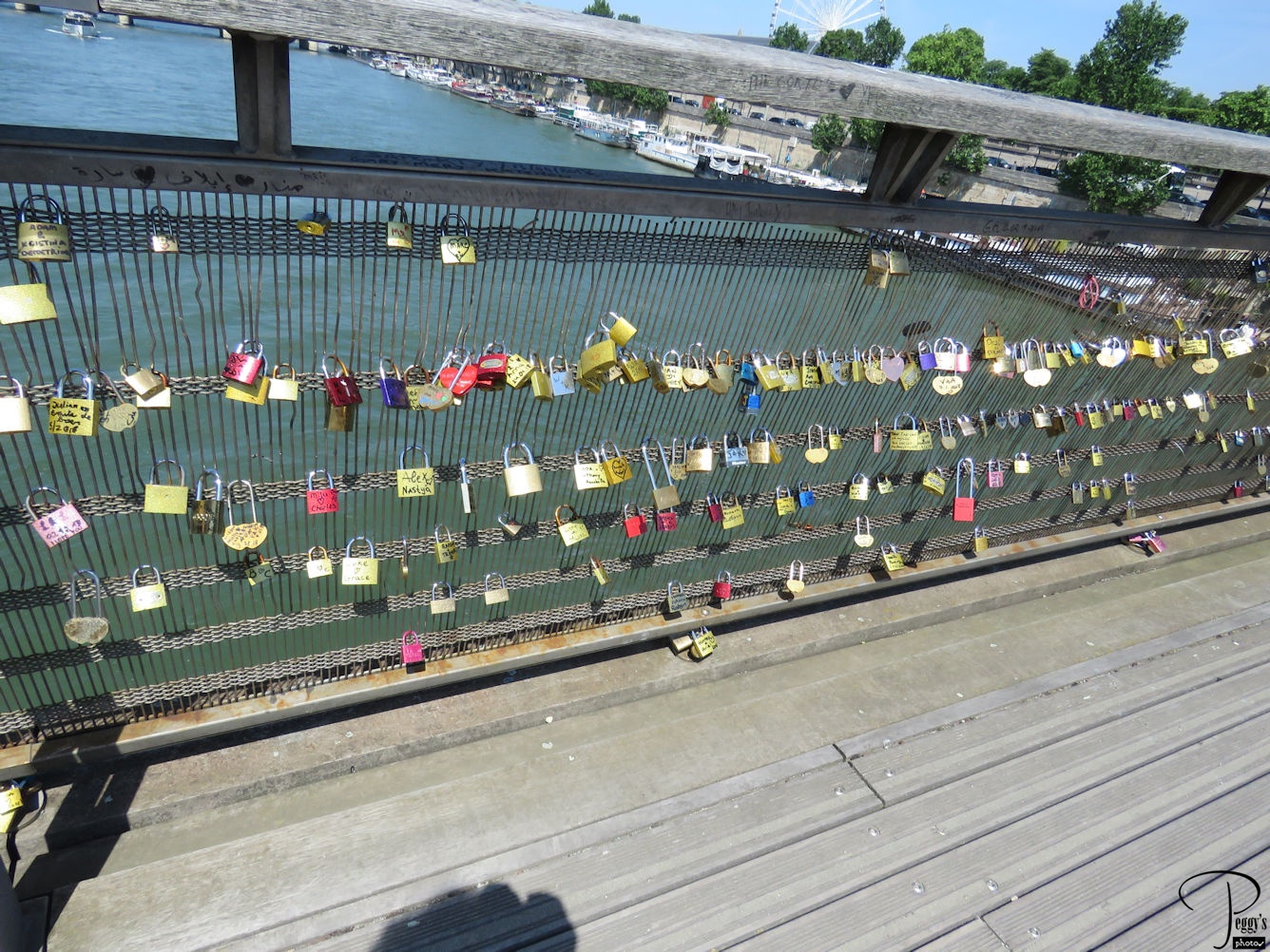
Locks on the pedestrian bridge.

Pedestrian Bridge
Pedestrian Bridge
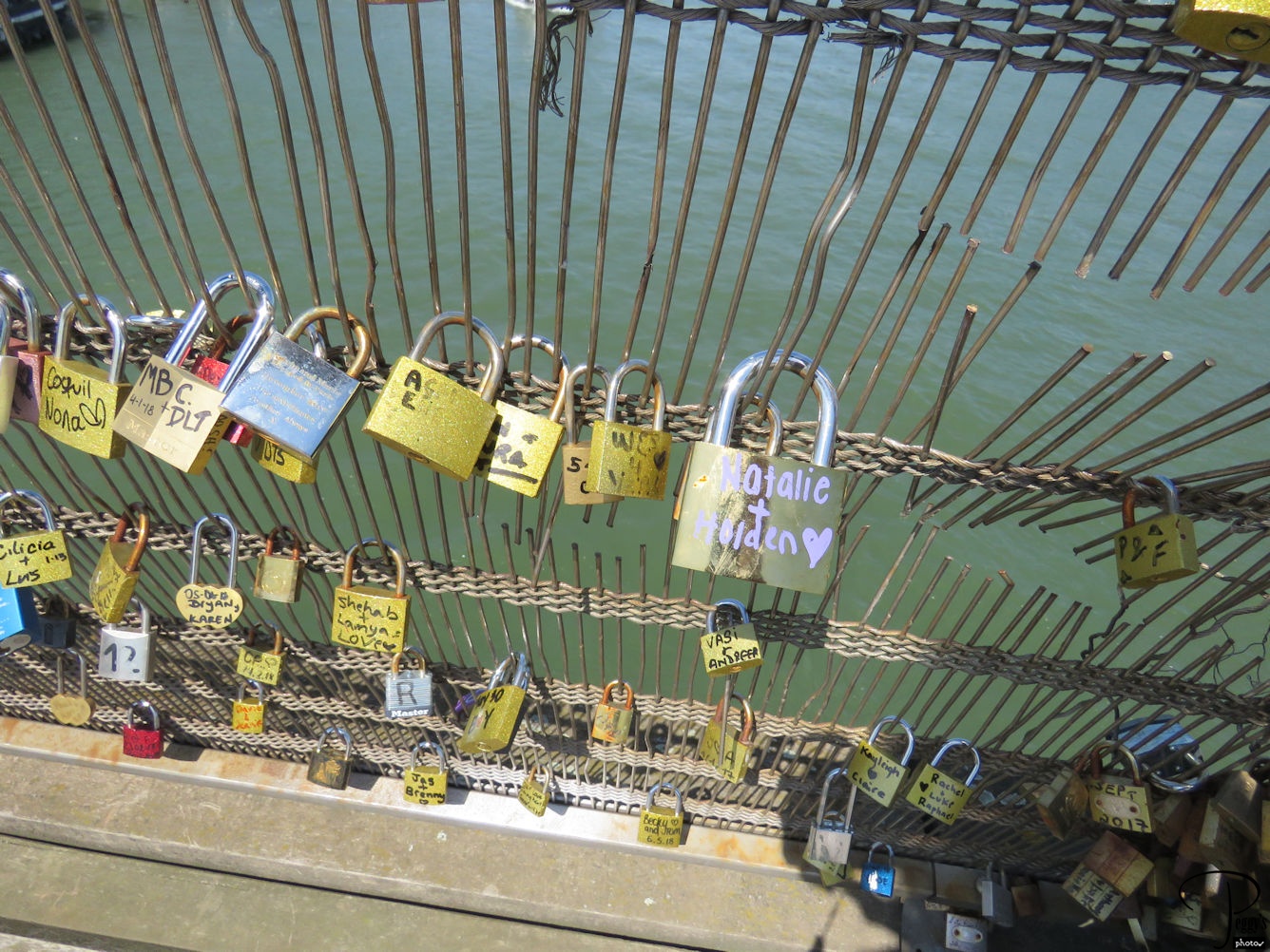
Close–up.

Pedestrian Bridge
Pedestrian Bridge
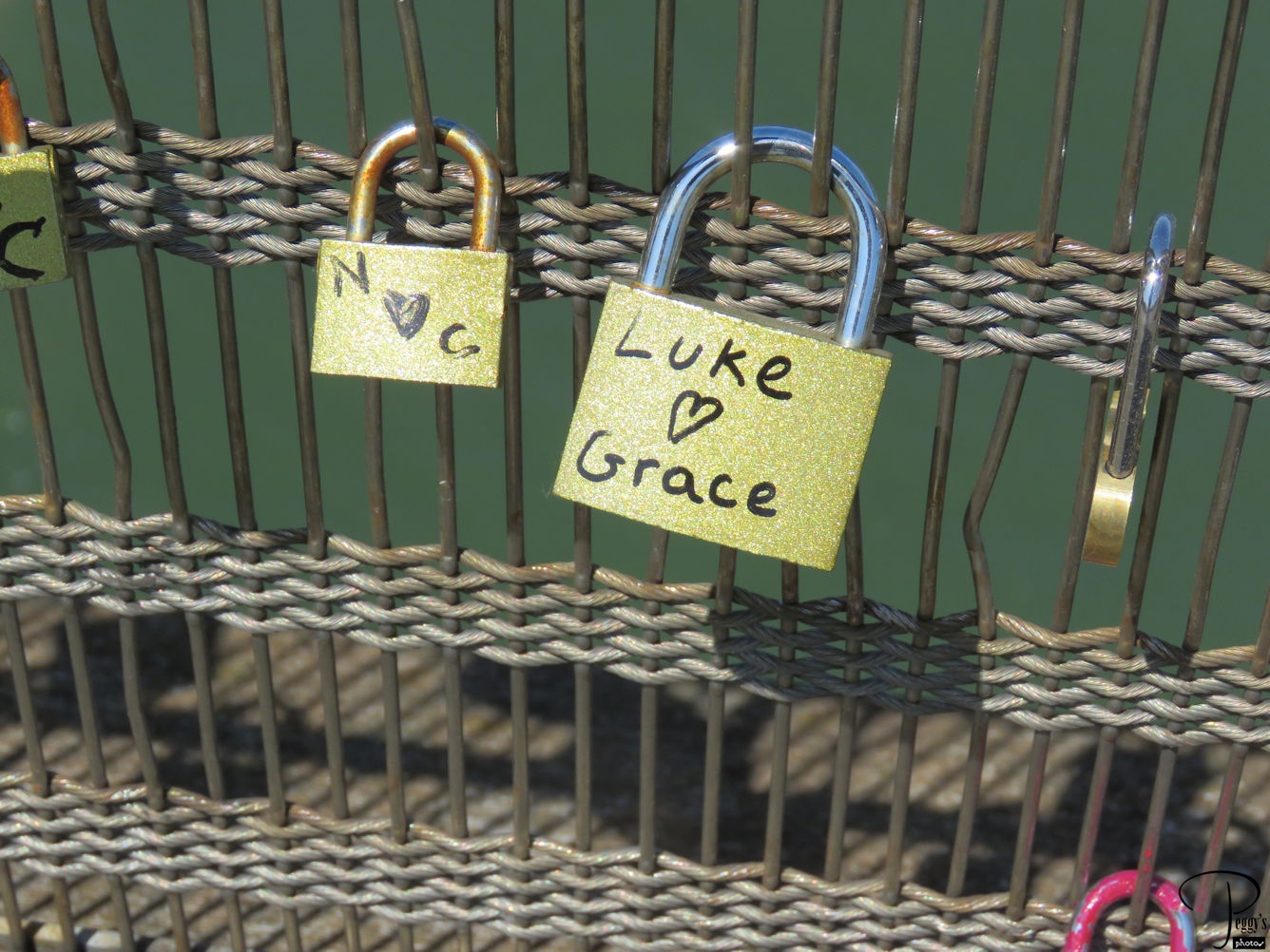
Closer–up. When I was nearly to the Right Bank, I saw a group of young women in a huddle. They broke up and what had happened is that four French teenage girls had surrounded two young Asian woman and had tried to steal what was in the handbag that one had around her neck. We were warned about pickpockets in Paris but I hadn’t been thinking about a gang of teenage girls being the pickpockets. I waited until the gang left to continue to walk over the bridge. This occurrence was the only bad one that I witnessed on my whole trip.

Pedestrian Bridge
Tuileries Garden
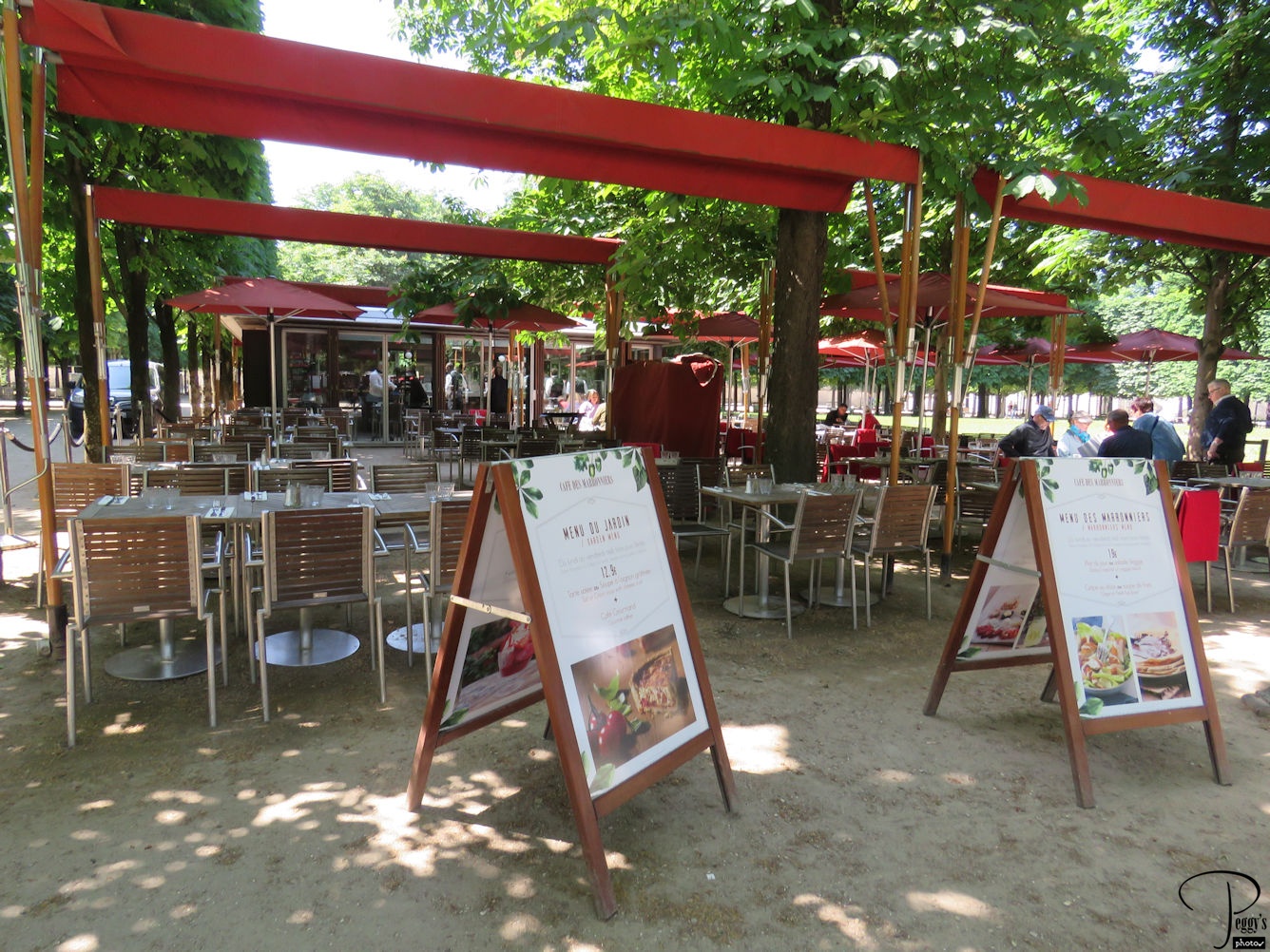
The Tuileries Garden connects the Louvre Museum with the Place de la Concorde. I walked in the direction of the Place de la Concorde and decided to have lunch at one of the two outdoor cafes that I saw in the garden. At the table next to me was an American couple and we had a good conversation. Our French waiter was very friendly, but kept calling me and the other woman “Lady.” We thought it was our tourist duty to tell him that American women really don’t like to be called “Lady” and we came up with other names to be called instead: Miss, Ma’am, Madame. We decided on Madame as we were in France (Yes, reminds me of Ethel Merman’s “Call Me Madame.”) And then our waiter said, “Okay Lady.” There was a single person bathroom at the cafe. I waited for a woman to come out of it and went in and then couldn’t open the dead bolt to get out of it. I knocked on the door loudly and probably added “Help! Help!” and still no one came to rescue me. Finally, someone did and I saw that she didn’t have a key for the door but instead had to use a knife to open the door. Everyone at the cafe stared at me when I left, but truly embarrassed, I held my head high just like a “Lady” would. Note: service charges are not added onto the bill in France. If you want to, tip 5–10% in cash.

Tuileries Garden
Tuileries Garden
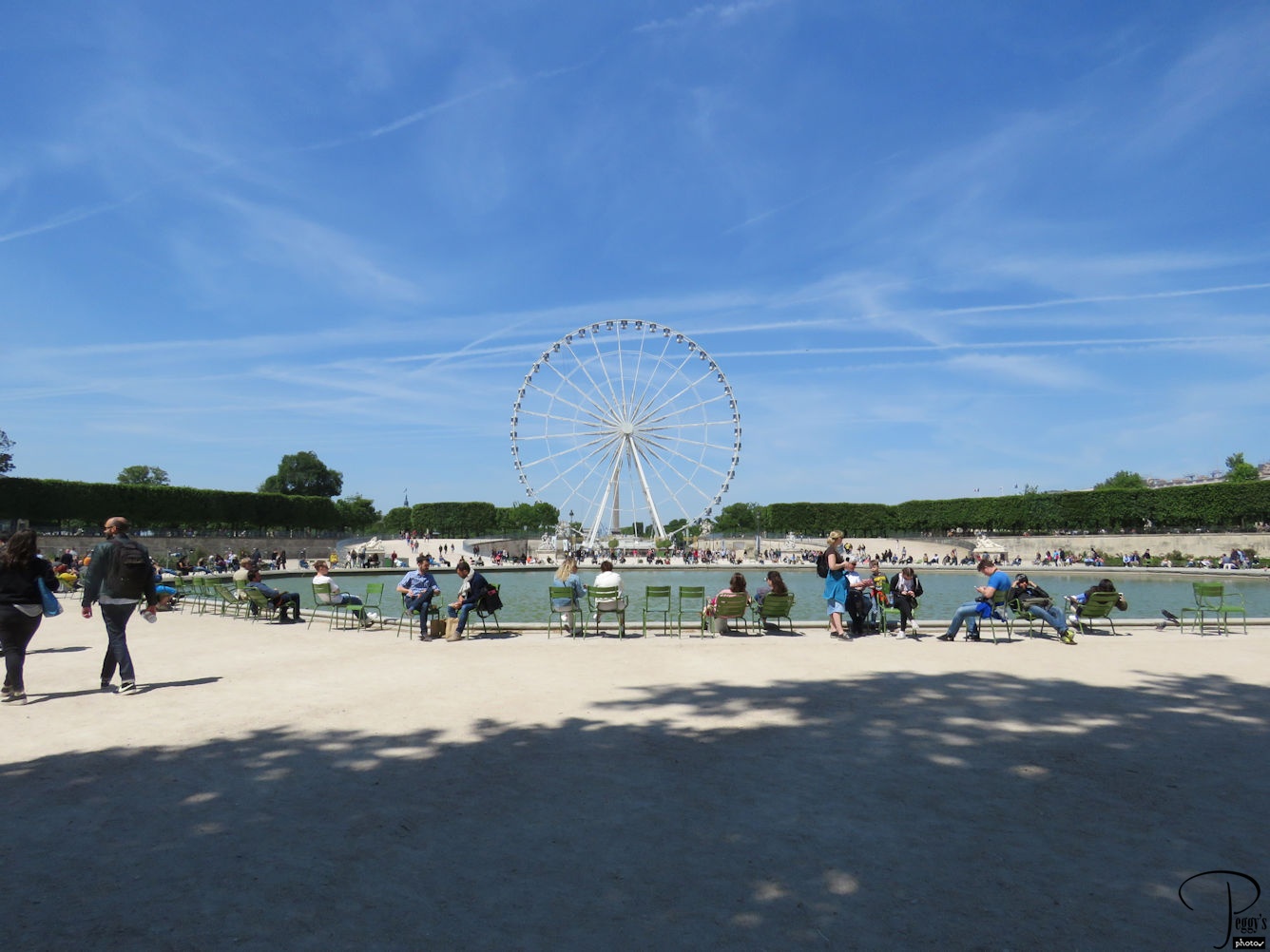
A large lake is in the Tuileries.

Tuileries Garden
Tuileries Garden
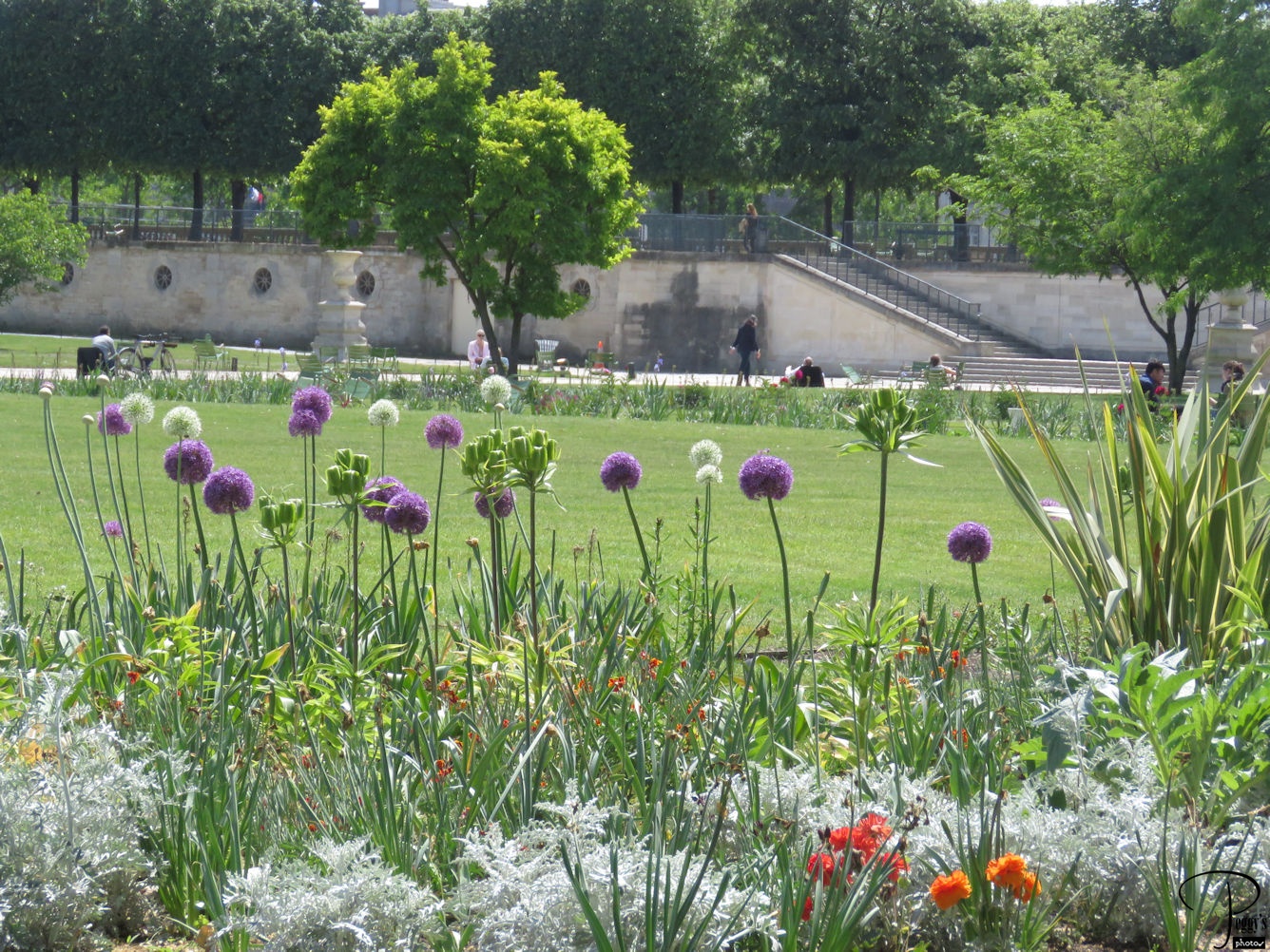
And also very pretty gardens.

Tuileries Garden
Place de la Concorde
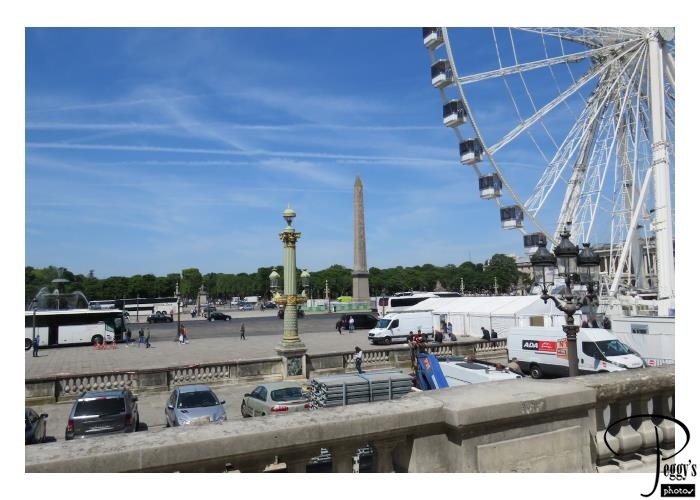
Overlooking the Place de la Concorde. It was first called the Place Louis XV and then the Place de la Revolution where Louis XVI and Marie Antoinette were guillotined. It was renamed the Place de la Concorde.

Place de la Concorde
Musee de l’Orangerie
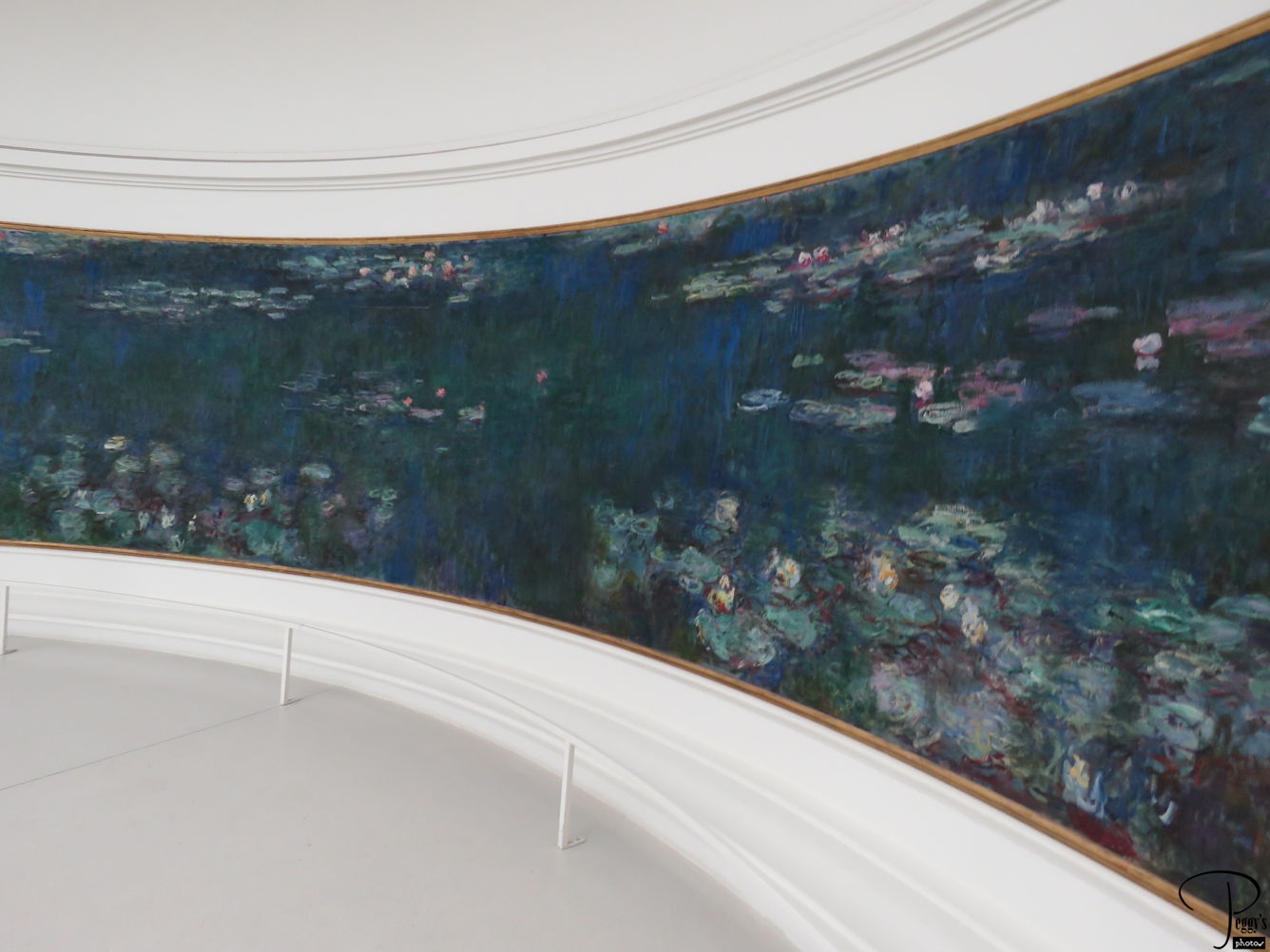
The Musee de l’Orangerie is in the Tuileries Gardens next to the Place de la Concorde. This was my next stop. The museum is located in a building that was used to shelter orange trees, hence, its name. It was closed for renovation in 2000 and reopened in 2006. Eight of Claude Monet’s large–format waterlily paintings are in the museum. Photo: one of the paintings.

Musee de l’Orangerie
Musee de l’Orangerie
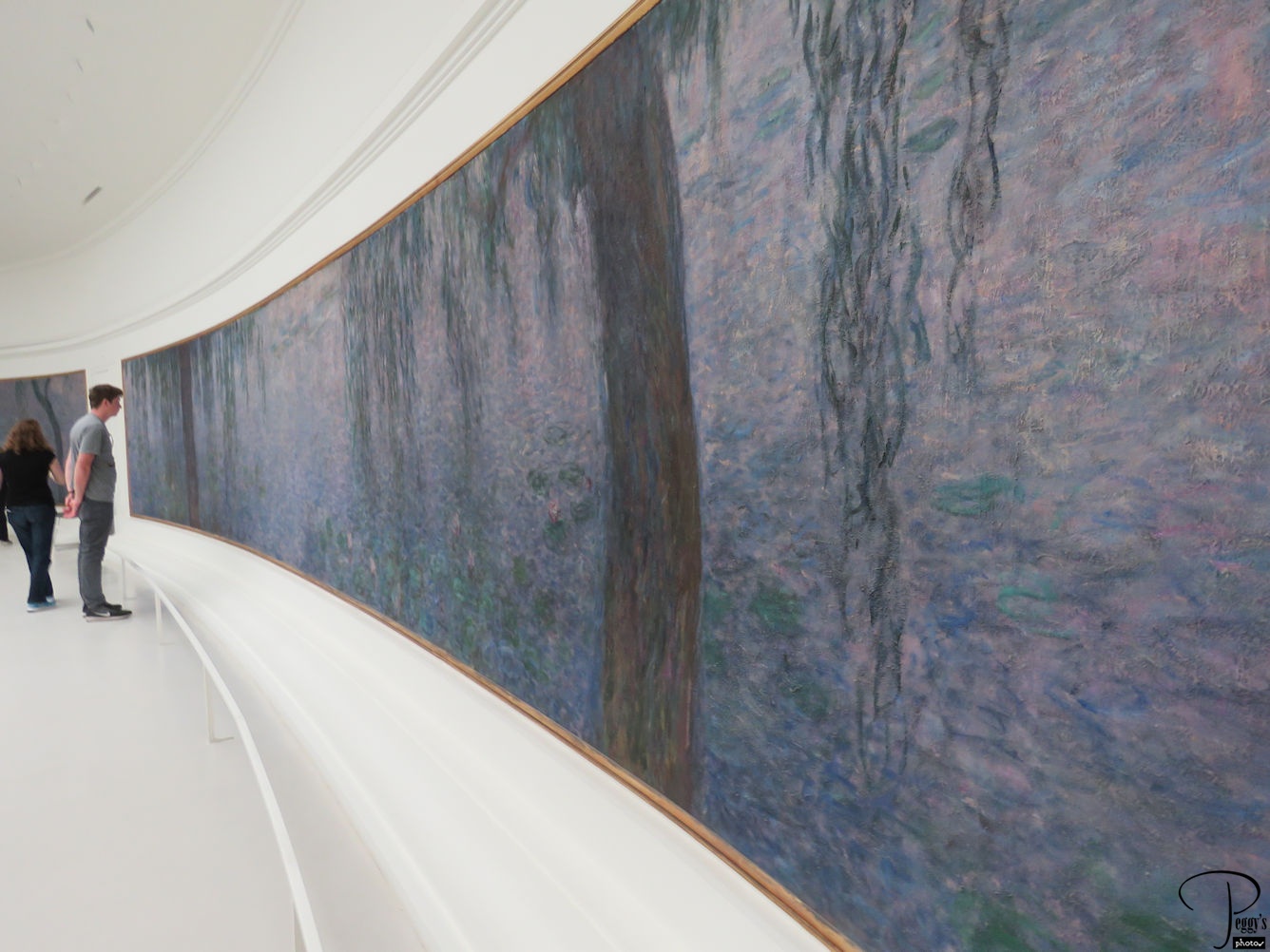
Another of the Monet’s waterlily paintings.

Musee de l’Orangerie
Musee de l’Orangerie
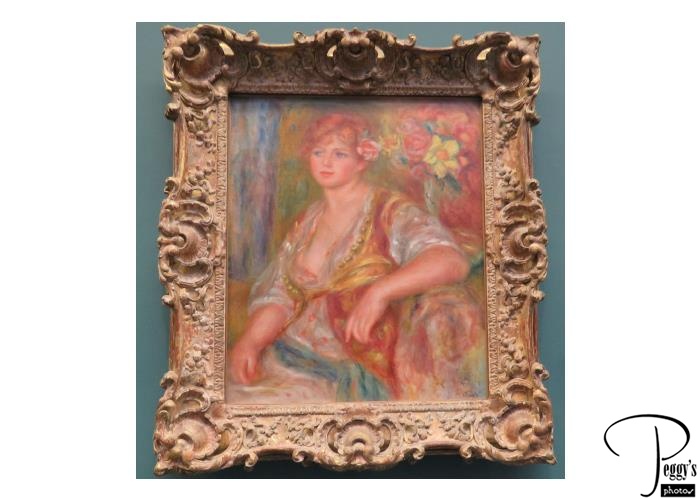
Underground at the Musee de l’Orangerie is a large gallery containing the Walter–Guillaume collection of impressionalist and post–impressionalist painting, more of the periods of paintings that I just saw at the Musee d’Orsay. The collection is very good. Here is a painting by Auguste Renoir.

Musee de l’Orangerie
Musee de l’Orangerie
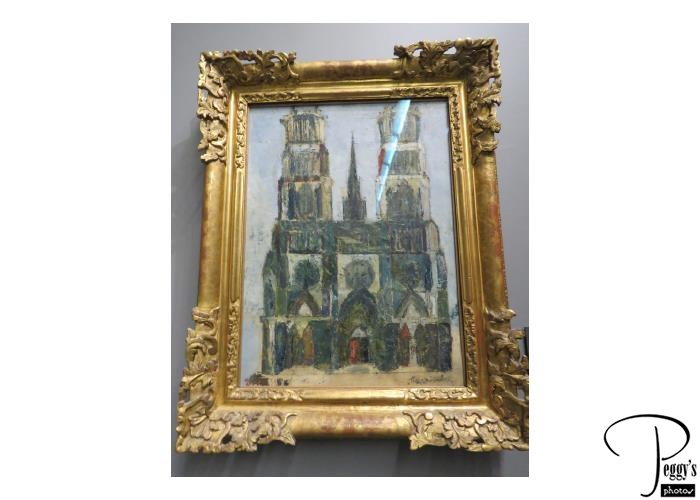
A painting by Maurice Utrillo.

Musee de l’Orangerie
Musee de l’Orangerie

A painting by Pablo Picasso.

Musee de l’Orangerie
Musee de l’Orangerie
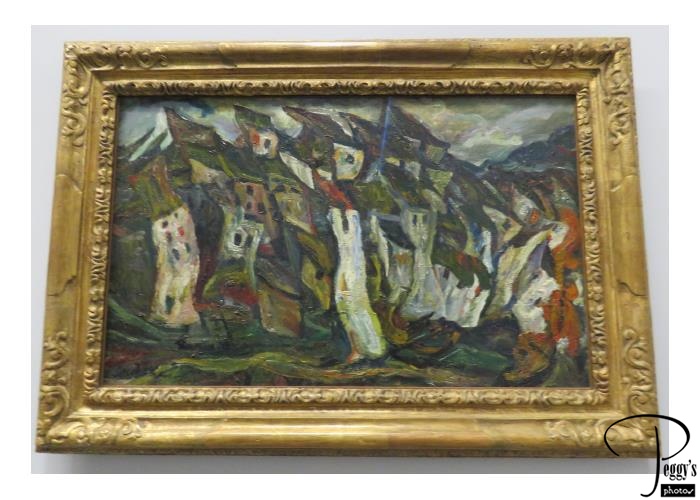
A painting by Chaim Soutine.
I have put my photos of the Musee de l’Orangerie on a slideshow. Go to
http://www.peggysphotos.com/paris–musee–de–lorangerie/
(Slide Shows, Western Europe, France, “Paris: Musee de l’Orangerie”).

Musee de l’Orangerie
Tuileries Garden
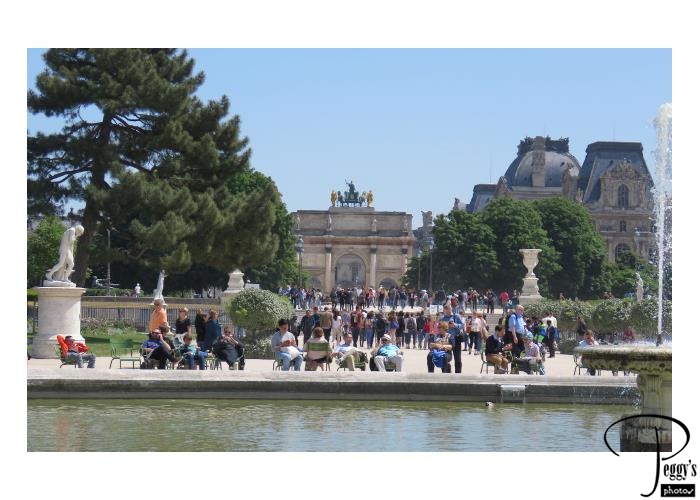
I walked back from the Musee de l’Orangerie through the Tuileries Garden toward the Louvre Museum. I was looking for the Carrousel du Louvre in which there was a La Maison du Chocolat store where I could buy my daughter a box of dark chocolates. I never found the Carrousel and walked instead to the Rue de Rivoli on the backside of the Louvre and took a taxi back to my hotel.

Tuileries Garden
Montmartre
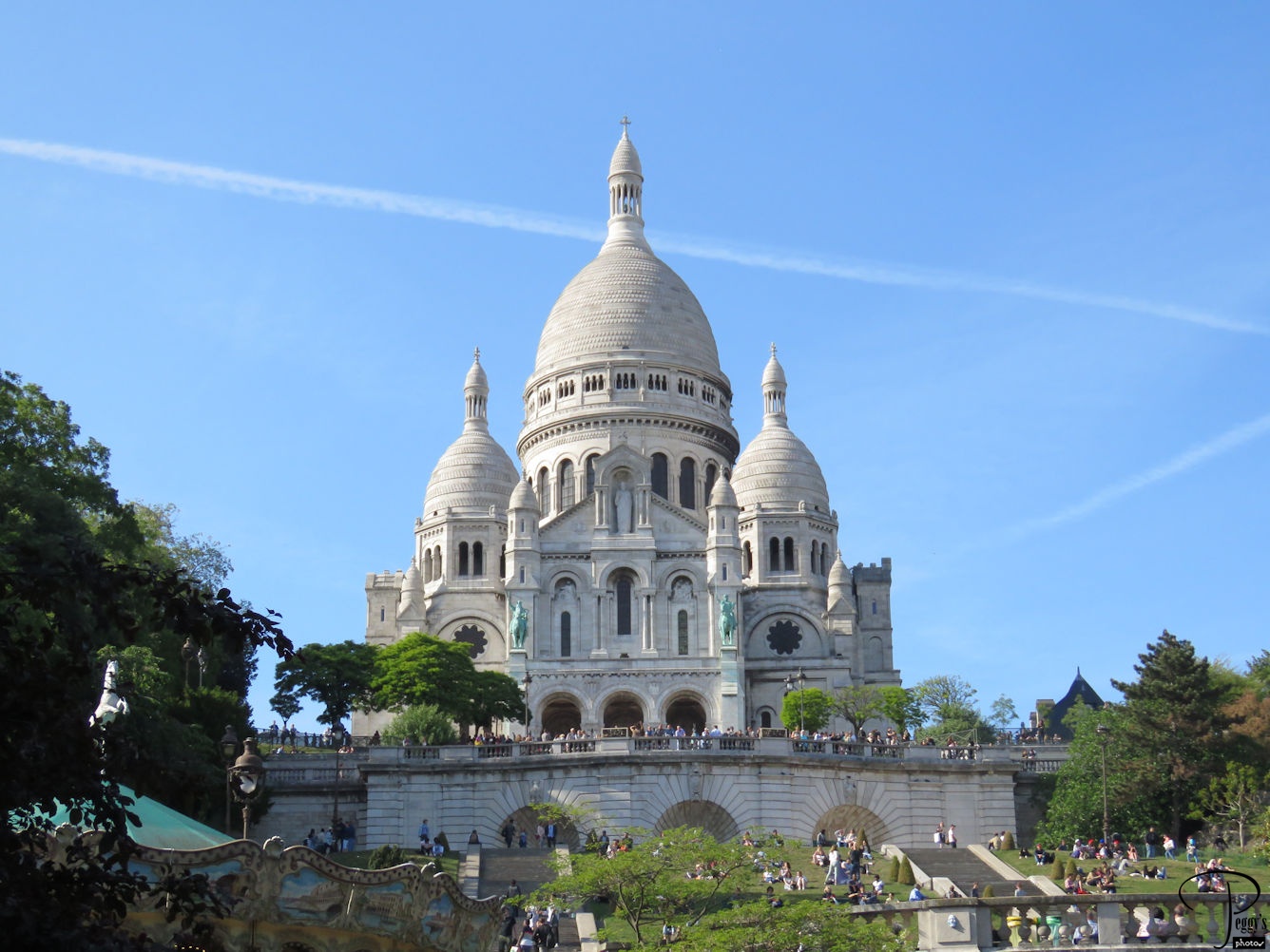
This early evening we had an optional tour to Montmartre, a section of Paris on a hill where the Basilica of the Sacre–Coeur is located. It was built at the end of the 19th century. “Montmartre” means the “mountain of the martyr.” Saint Denis was decapitated here in 250 A.D. His headless statue is on the front of Notre Dame.

Montmartre
Montmartre Funicular–MOVIE
There is a path that you can take up to the basilica or you can take the Funiculaire de Montmartre, which opened in 1900, was rebuilt in 1935, and again in 1991. You can also walk up the hill from a back way, which I did on a previous trip to France.
Youtube: https://youtu.be/gPaVvmOqemY

Montmartre Funicular–MOVIE
Montmartre
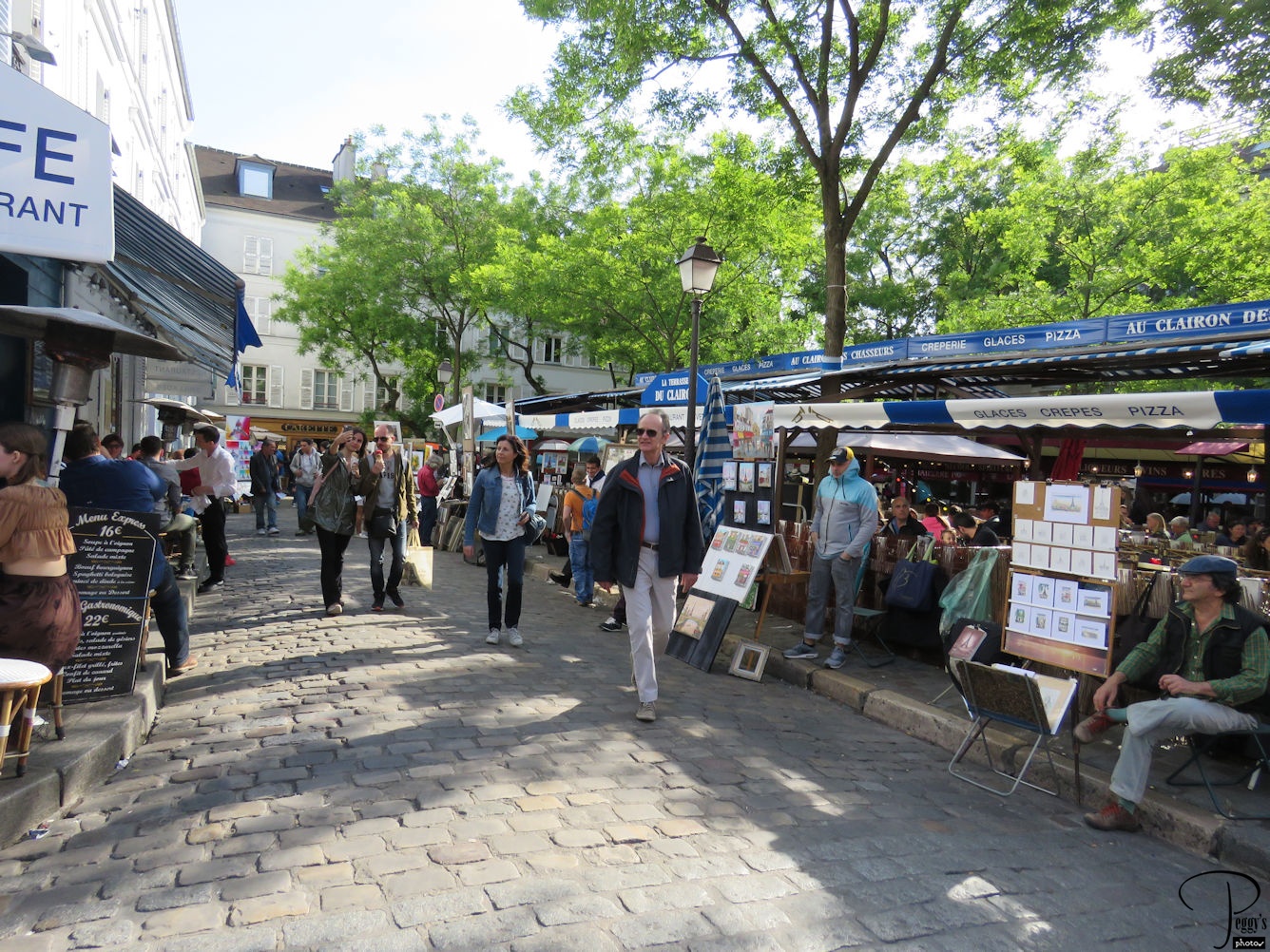
The square in Montmarte has many restaurants, souvenir shops, and artists, both painting and selling their pictures, some very good but most tourist paintings as it is a tourist area. From the end of the 19th century and the beginning of the 20th, during the Belle Epogue––a period of peace and prosperity between two world wars––many famous artists had studios here or else painted here: Modigliani, Monet, Renoir, Degas, Toulouse–Lautrec, Modrian, Picasco, and Van Gogh.

Montmartre
Montmartre
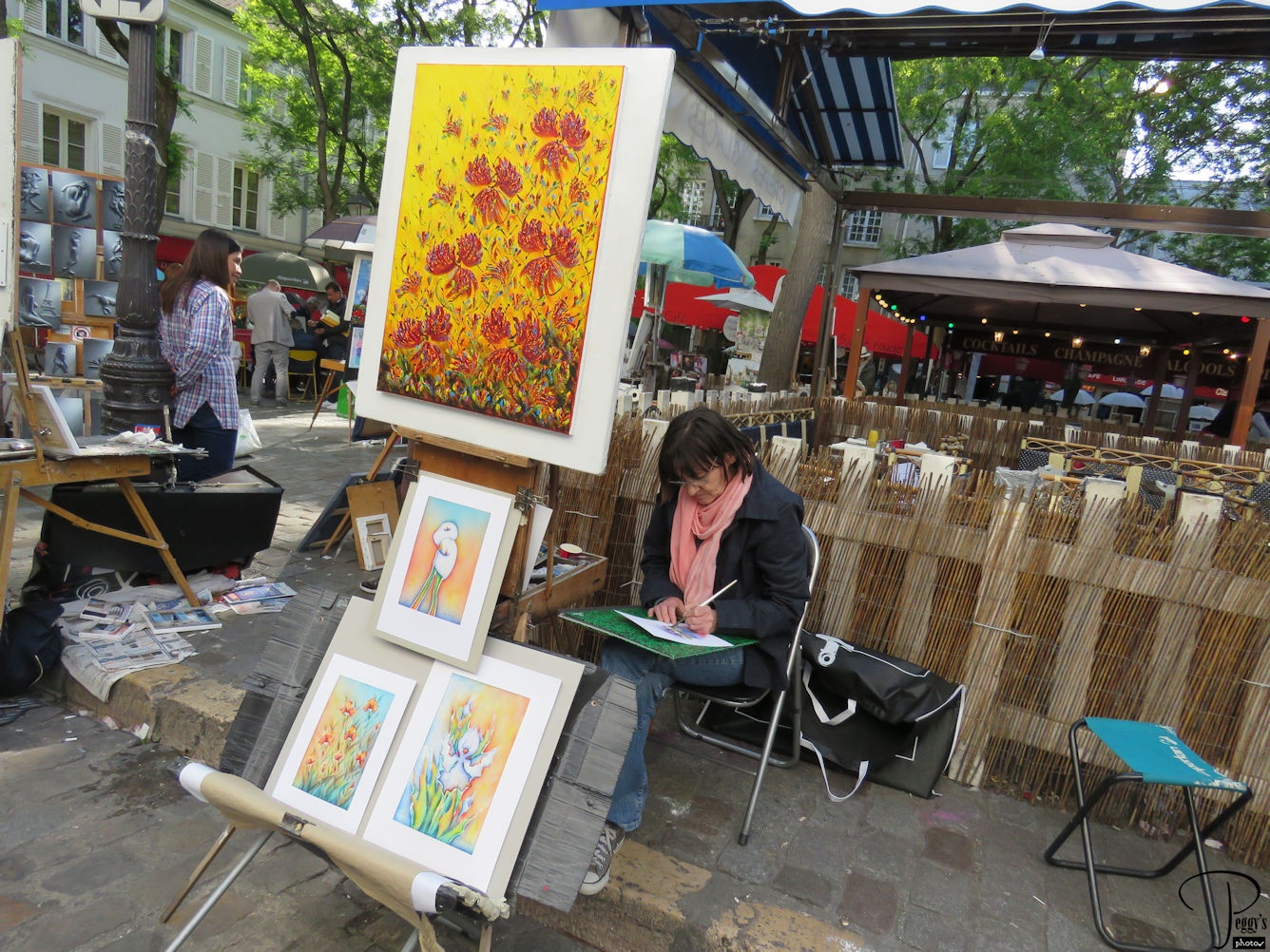
An artist and her work. When I was here in 2004, no artist would let me take a photo of their paintings. This time, they didn’t seem to mind.

Montmartre
Montmartre
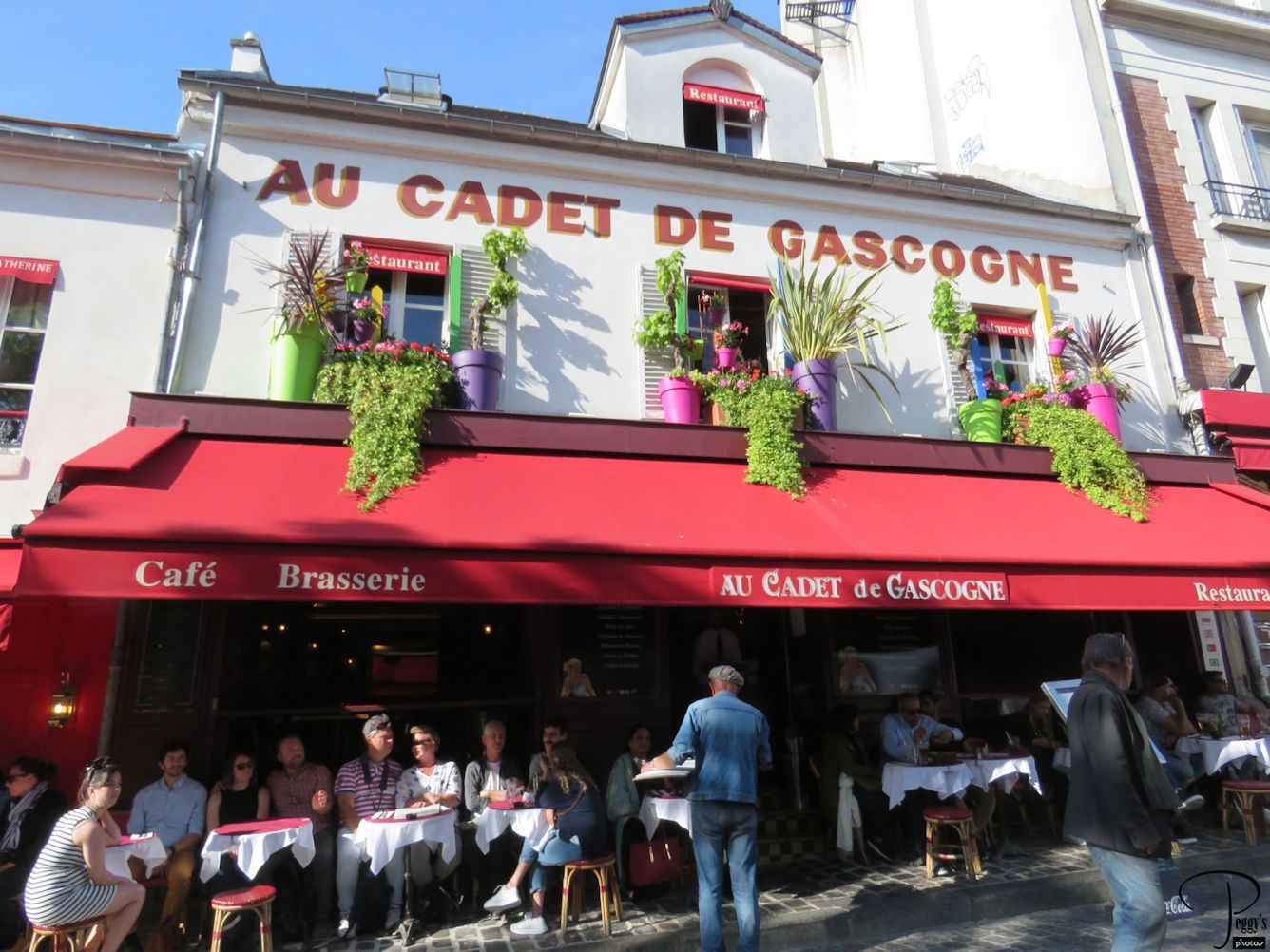
A restaurant in Montmartre. Montmartre is colorful.

Montmartre
Montmartre
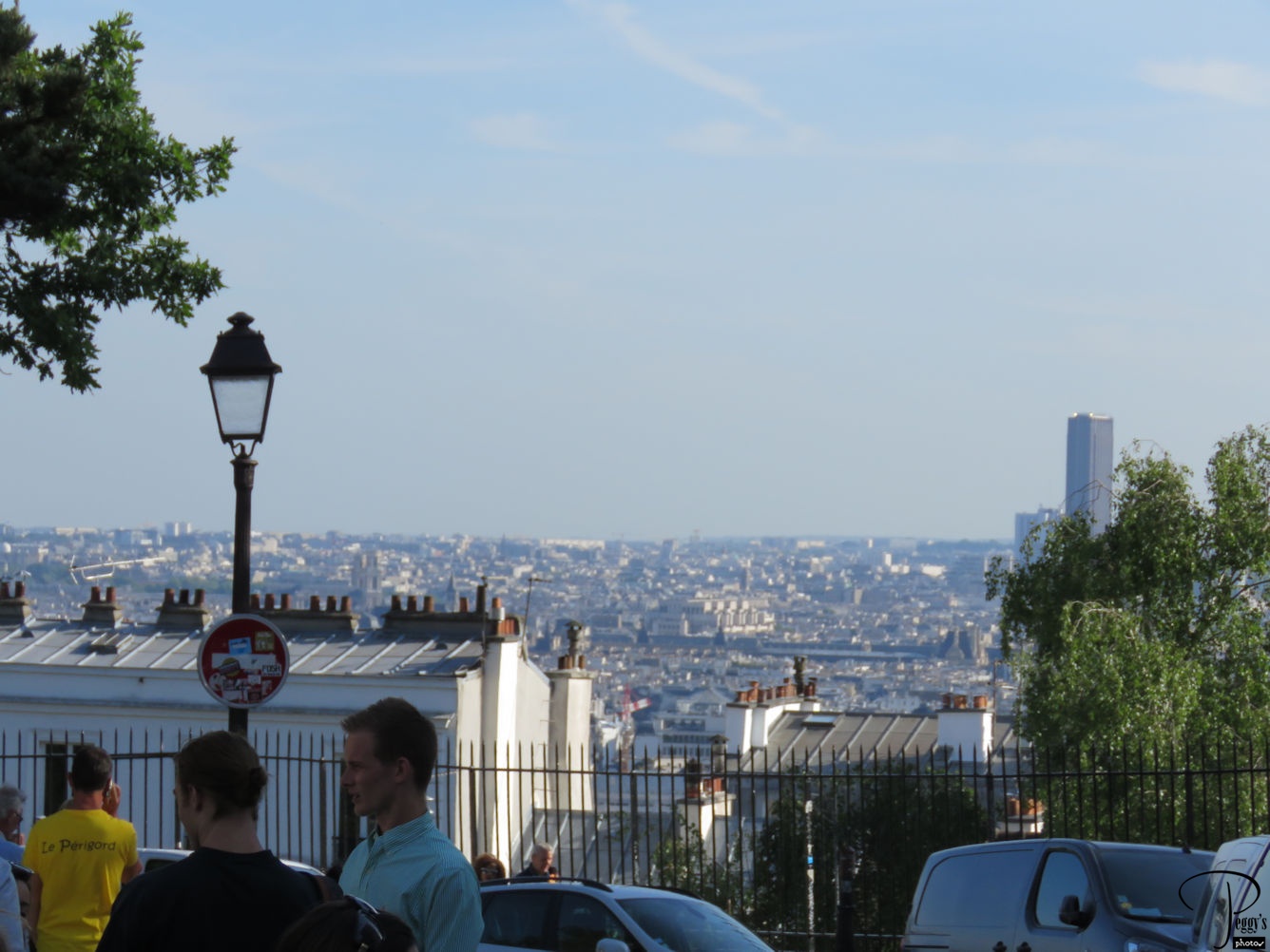
A view of Paris from the top of the hill.

Montmartre
Montmartre
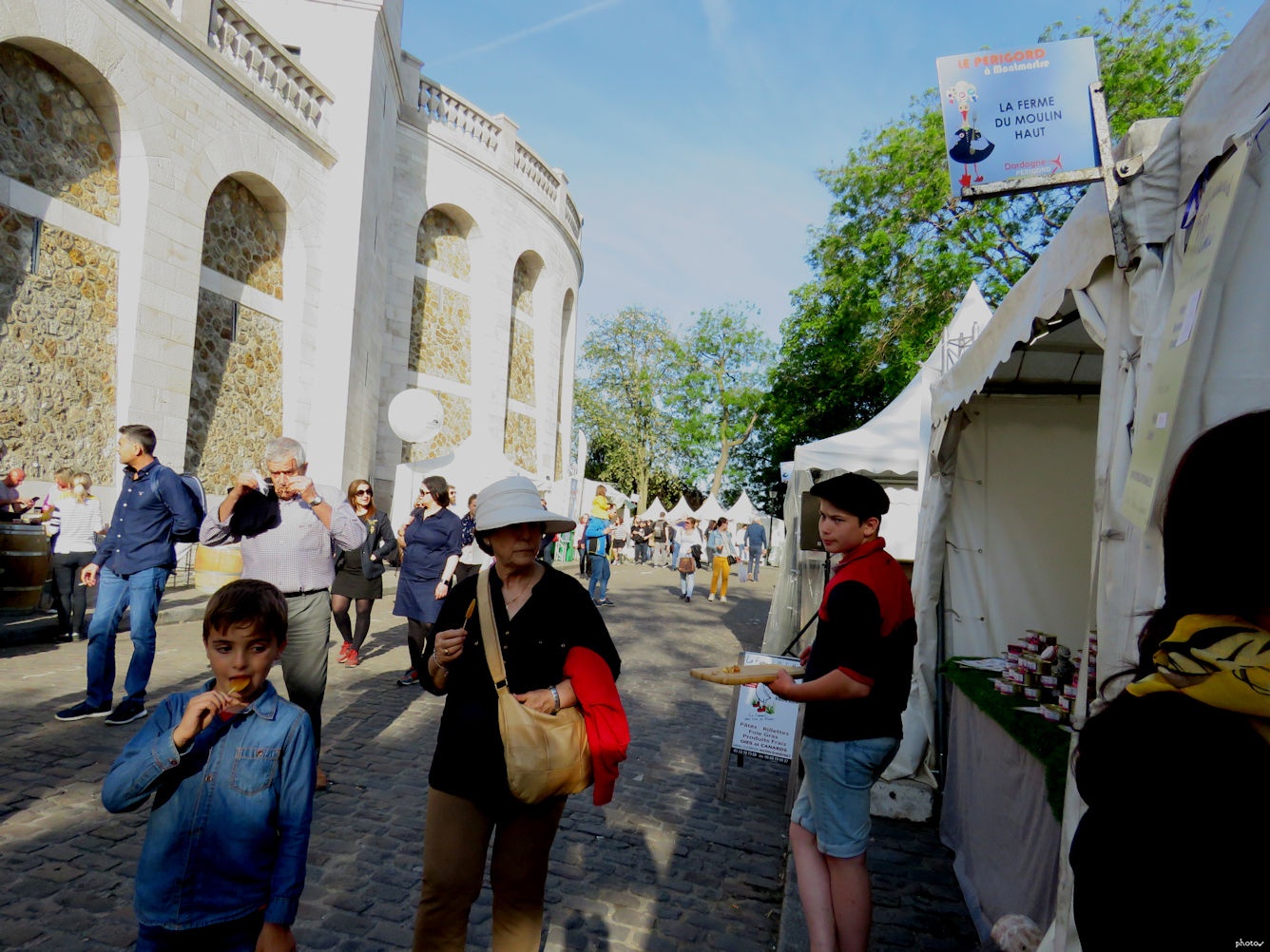
On the way down the hill there was a food fair selling various take–home foods. Lots of foie gras for sale.

Montmartre
Montmartre
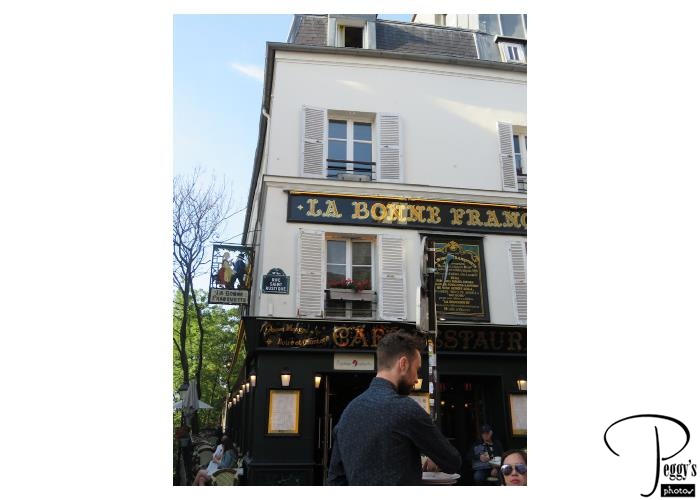
Dinner in Montmartre was part of the tour. We ate at La Bonne Franquette. Its building dates back to the 16th century.

Montmartre
Illuminations
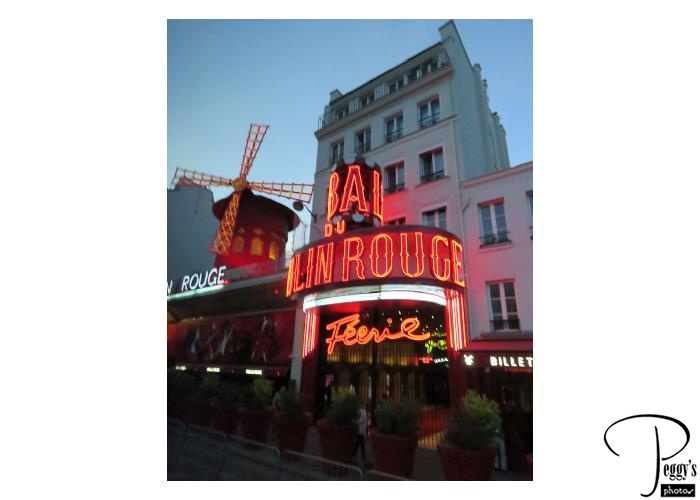
Our optional tour was named “Montmartre & Illuminations with dinner.” We were at Montmartre too early to see it lit up at night as sunset wasn’t until about 9 p.m. But we did see some illuminations on our way back to our hotel. Photo: The Moulin Rouge lit up.
I have put my photos of Montmartre on a slideshow. Go to http://www.peggysphotos.com/paris–montmartre/
(Slideshows, Western Europe, France, “Paris: Montmartre”).
